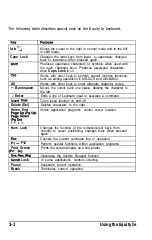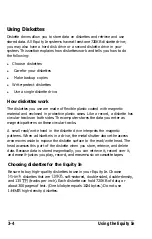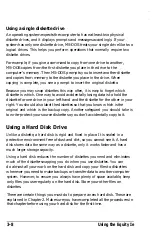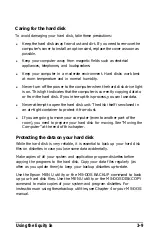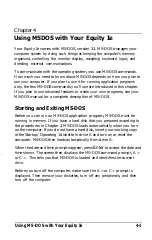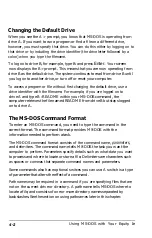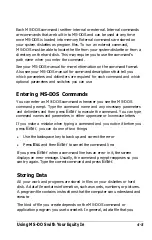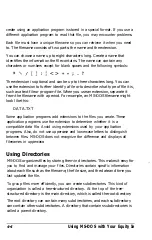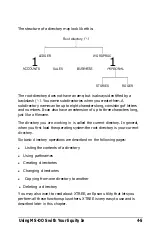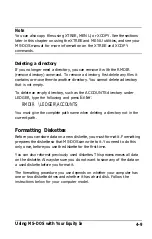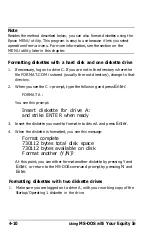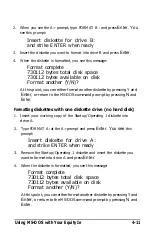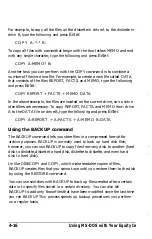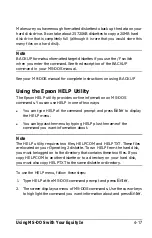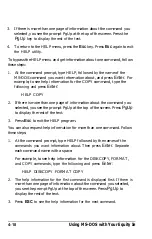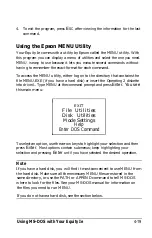
create using an application program is stored in a special format. If you use a
different application program to read that file, you may encounter problems.
Each file must have a unique filename so you can retrieve it when you need
to. The filename consists of two parts: the name and the extension.
You can choose a name up to eight characters long. Create a name that
identifies the information the file contains. The name can contain any
characters or numbers except for blank spaces and the following symbols:
The extension is optional and can be up to three characters long. You can
use the extension to further identify a file or to describe what type of file it is,
such as a text file or program file. When you use an extension, separate it
from the filename with a period. For example, an MS-DOS filename might
look like this:
DATA.TXT
Some application programs add extensions to the files you create. These
application programs use the extension to determine whether it is a
compatible data file. Avoid using extensions used by your application
programs. Also, do not use uppercase and lowercase letters to distinguish
between files. MS-DOS does not recognize the difference and displays all
filenames in uppercase.
Using Directories
MS-DOS organizes files by storing them in directories. This makes it easy for
you to find and manage your files. Directories contain specific information
about each file such as the filename, the file size, and the date and time you
last updated the file.
To group files more efficiently, you can create subdirectories. This kind of
organization is called a tree-structured directory. At the top of the tree-
structured directory is the main directory, which is called the root directory
The root directory can contain many subdirectories, and each subdirectory
can contain other subdirectories. A directory that contains subdirectories is
called a parent directory.
4-4
Using MS-DOS with Your Equity Ie
Summary of Contents for Equity Ie
Page 1: ...EQLJITYIe User s Guide EPSON ...
Page 2: ...EPSON EGlLJITYIe User s Guide Q50188015 1 ...
Page 5: ...iv ...
Page 47: ...3 12 Using the Equity Ie ...
Page 73: ...4 26 Using MS DOS with Your Equity Ie ...
Page 147: ...EQLJITYIe m la r ...

